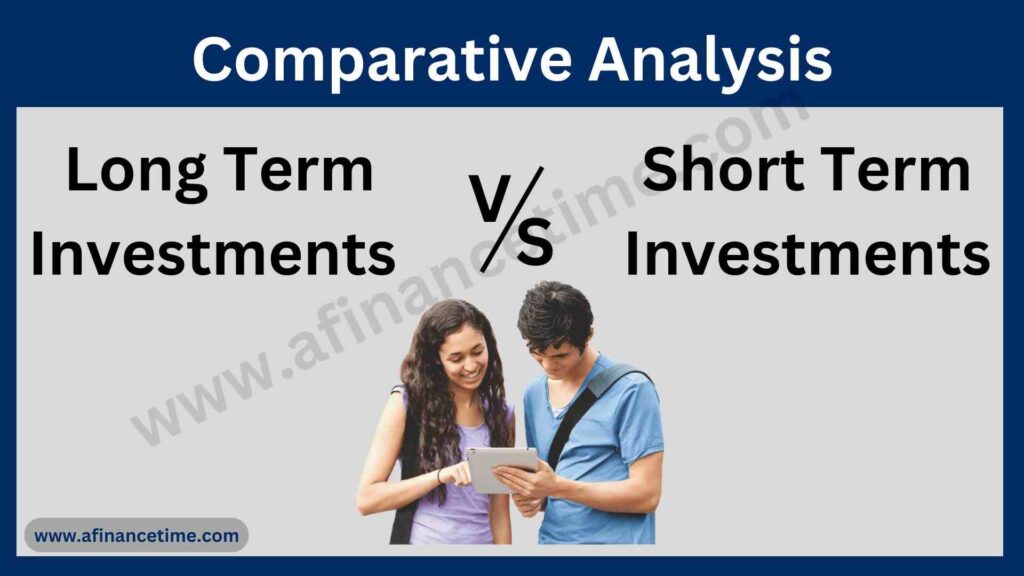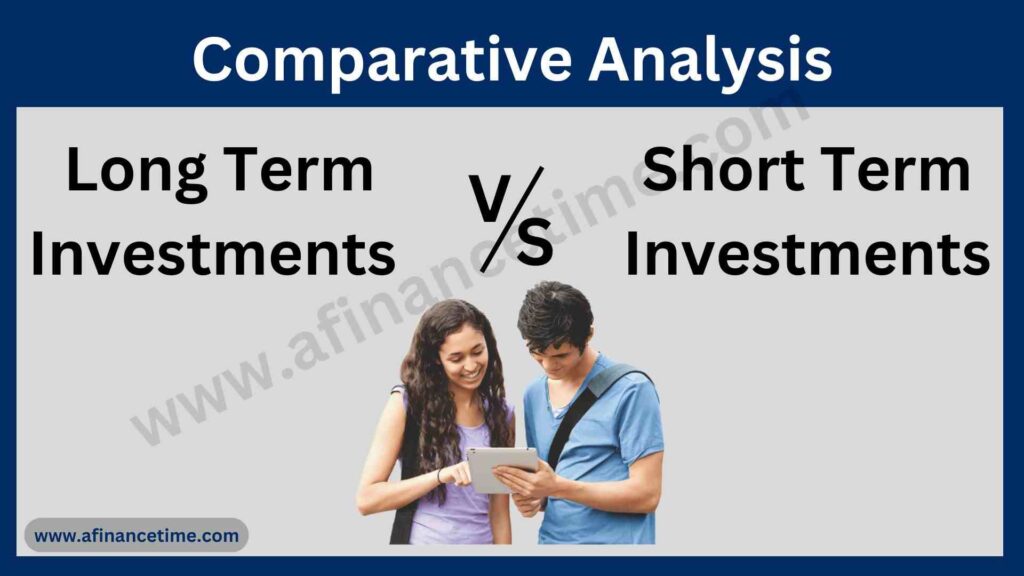Dear friends, Diving into the realm of financial strategies, the choice Long Term vs Short Term Investments defines how we build and preserve wealth. While short-term gains offer quick returns, long-term investments promise stability and growth over time. Understanding these options is crucial for crafting a resilient financial portfolio. Stay tuned with us till the end of the article.

Introduction
Investments need to change over time. How do we know whether we should hold the investment we have made or not? As we all know the purpose of investing is to build wealth and keep the coffers full for emergencies. Have you ever thought that if you have money but you can\’t use it at the right time what is the use of it?
In today\’s topic, we will explain to you what you should invest in both short-term and long-term investment options according to your needs so that you can get good profits in the future. Before investing for short term and long term you need to have enough information about both terms so that you can strengthen your financial portfolio.
So let’s, in today’s topic we will get information about short term and long term in complete details.
Also read: What is PE and PB Ratio?
What Are Long-Term Investments?
To define long term investment, those financial assets which are held for more than one year can be termed as long term investment. Investing for the long haul aligns with goals like home ownership, saving for educational needs, or securing retirement.
There is no immediate or short term gain in this, you don’t sell your assets quickly in a long term investment and you save it for future. Long-term investments also generate income in the form of dividends and interest through which you can manage day-to-day expenses in the medium term.
Also Read: Blue Chip Stocks or Penny Stocks Which is More Profitable?
Different Types of Long-Term Investments
Depending on the type of investment you want to make, long-term investments can be divided into several categories.
- Equity/Stocks
We all know what was the level of the market in the year 2010 and what is the level today? Markets and stocks may be volatile in the short term but their value appreciates in the long term.
Investing in a company with good market cap and best fundamentals can increase its value over time and also earn dividends. If you look at the past data, it can be estimated that you can get returns of 10-15% every year.
- Bonds
Bonds are an investment made in the fixed income market in which you get good income in the form of interest rate, debentures, government security etc.
- Real Estate
Here you purchase the property with the assumption that its value will increase over time and if you can rent out the property, a good income can also be generated. For this reason, people invest in real estate for a long period of time.
Apart from bonds, real estate, and stocks, Mutual funds, PPF, NPS, FDs, Gold and similar avenues are also viable options for long-term investments.
Also Read: Is Groww App Better or Upstox for Investing as a Student?
Benefits and Limitations of long-Term Investments
- Advantage
Long term investment has many advantages such as it can generate good returns over time in long term. Long term investment has less risk as long term investments give good returns over time. In most of the cases, there is also an advantage in tax. You can diversify your portfolio by investing in different categories or stocks over the long term.
- Limitations/Disadvantage
Talking about the biggest disadvantage in long term investment is that your fund or invested capital is locked for a long time and many times that capital cannot be used in times of emergency.
Performance of Long Term investments are subject to macroeconomic factors like Interest Rates, inflation Risk etc. which might affect the returns.
Also Read: MRF Share Price In 2024, 2025, 2026, 2030 & 2050
What Are Short-Term Investments?

Short term investment i.e. financial assets which are held for less than one year are called short term investment. If your objective is to make a good return in a short period of time, to grow your own capital or to meet an immediate financial need, then you can make short term investments.
Short-term investments are high in risk but can often yield quick profits and good returns. There are many types of categories to invest in short term as well which we will see further.
Also Read: Reliance Home Finance Share Price Target 2024, 2025, 2026 and 2030
Different Types of Short-Term Investments
- Saving Account
- Certificate of Deposit
- Money Market Account
- Treasury Bills
- Recurring Deposits
- Short-terms Bonds
- Liquid Funds
- Fixed Maturity Plans
Advantage and Disadvantage of short-Term Investments
- Advantage
Short term investments have high liquidity which means you can access your money anytime. Capital invested in the short term can come in handy in times of emergency.
Short term investment matures after some time due to which you can use that capital elsewhere. Many short-term investments are protected by the government or even a company so that the amount of risk is reduced. Risk in debt market is near about zero.
- Limitations/Disadvantage
Return in short term investment is less than long term investment. Short-term investments have a growth limit; they cannot yield higher returns beyond a certain threshold. Short term gains are taxed more which emerges as a disadvantage.
Although short-term investments are less volatile, they are affected by fluctuations in the market. For example, if there is any bad news in the market, its impact is more on the next day.
Long Term vs Short Term Investments
| Feature | Long Term Investments | Short Terms Investments |
|---|---|---|
| Time Duration | More than 1 Year | Less than 1 Year |
| Investment Aim | Wealth accumulation for significant life goals | Generate quick returns, Preserve capital |
| Risk | High risk | Low risk |
| Example | Stock, Bonds, Real Estate etc. | Saving account, FDs, Money market funds etc. |
Also Read
- Blue Chip Stocks or Penny Stocks Which is More Profitable?
- FCS Software Share Price Target 2025, 2026 to 2030 & 2040
- Salasar Techno Share Price Target 2024, 2025, 2026, 2027 & 2030
- IRB Infra Share Price Target 2024, 2025, 2026, 2027, 2030
Conclusion
In conclusion, choosing between short-term and long-term investments hinges on your financial goals, risk tolerance, and liquidity needs. Long-term investments offer stability and potential for substantial growth, aligning with objectives like retirement planning and wealth accumulation. Conversely, short-term investments provide liquidity and quick returns, catering to immediate financial needs or capital growth opportunities. Both avenues play vital roles in a diversified portfolio, balancing risk and reward. Understanding these options empowers you to make informed investment decisions that align with your financial aspirations and ensure resilience in varying market conditions. Whether for short-term gains or long-term security, strategic investment planning is key to financial success.
FAQs
What are the key differences between short-term and long-term investments?
Short-term investments are held for less than one year and typically involve higher liquidity and risk, aiming for quick returns. In contrast, long-term investments span over a year or more, focusing on stability, growth, and achieving financial goals like retirement or education savings.
How should I decide between short-term and long-term investments?
Your decision should align with your financial objectives and timeline. Short-term investments are suitable for immediate needs or capitalizing on market opportunities, while long-term investments are ideal for goals requiring sustained growth and stability over time.
What are the potential risks associated with long-term investments?
Long-term investments can be subject to market volatility, economic fluctuations, and inflation risks. Additionally, funds are typically locked in for extended periods, limiting immediate access to capital in emergencies.





